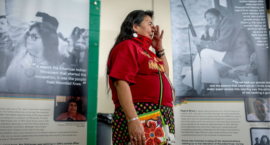
More than 8,000 Catholic employers across the country will not be required to provide accommodations for workers needing abortion or fertility care following a ruling in North Dakota. An estimated 162,000 workers are on these health plans.
Abortion access, IVF treatment and gender-affirming care have all become major talking points in an election that may be defined by them. Vice President Kamala Harris, who supports all three, has been critical of Trump’s stance on abortion and IVF in particular.











